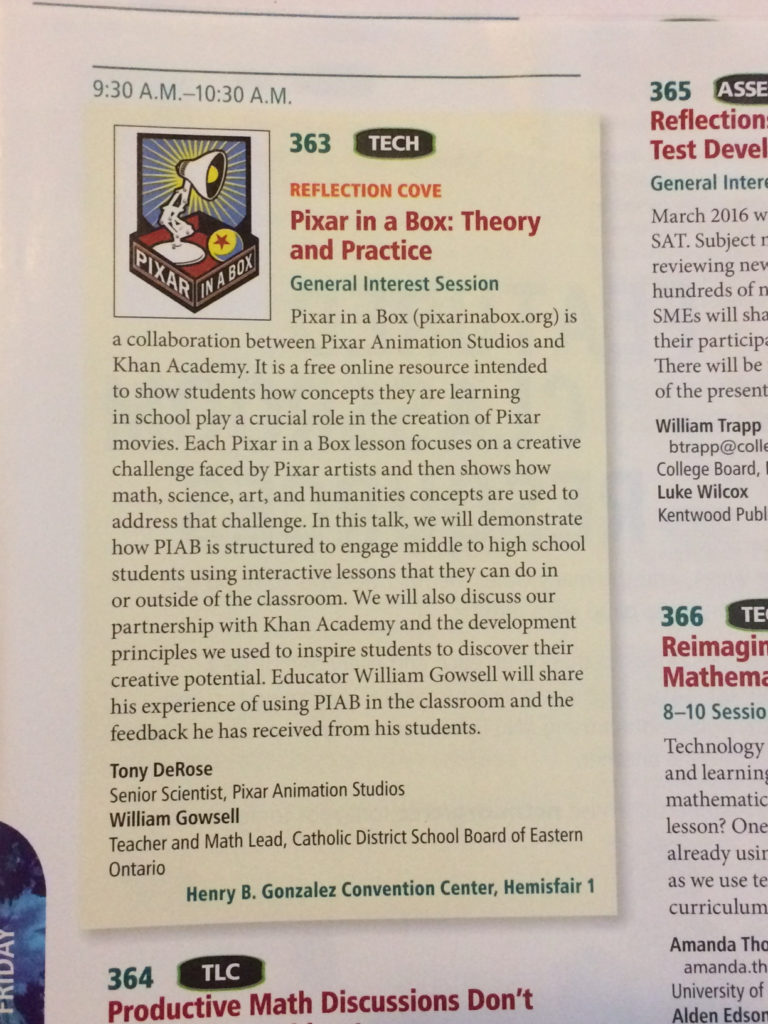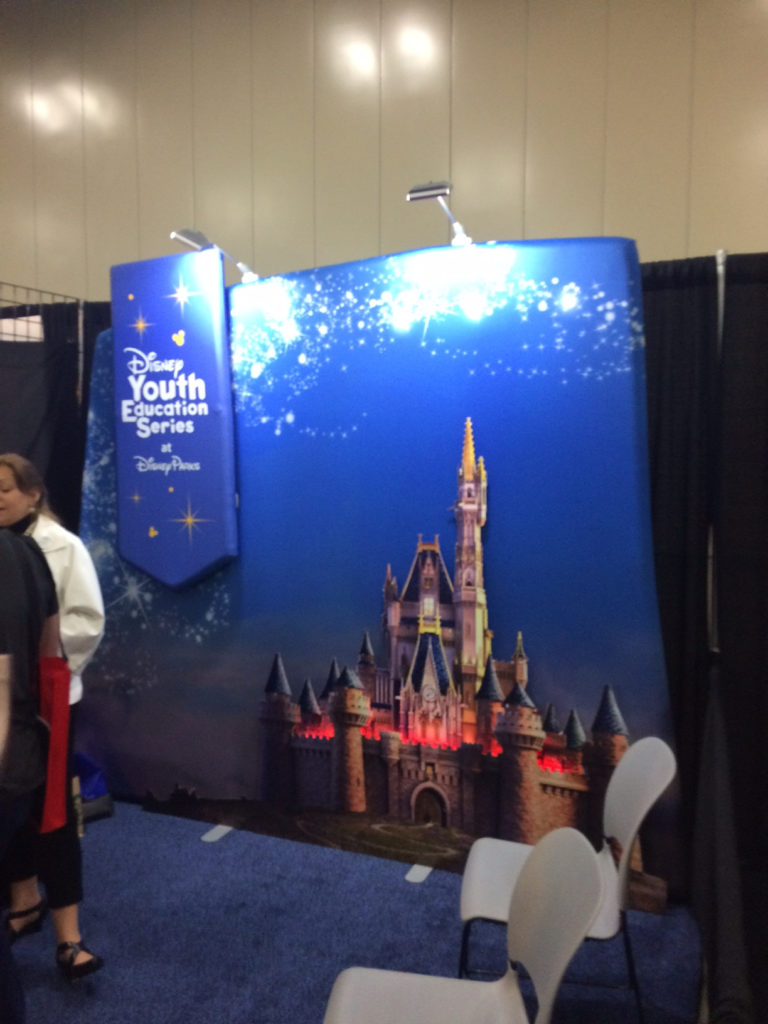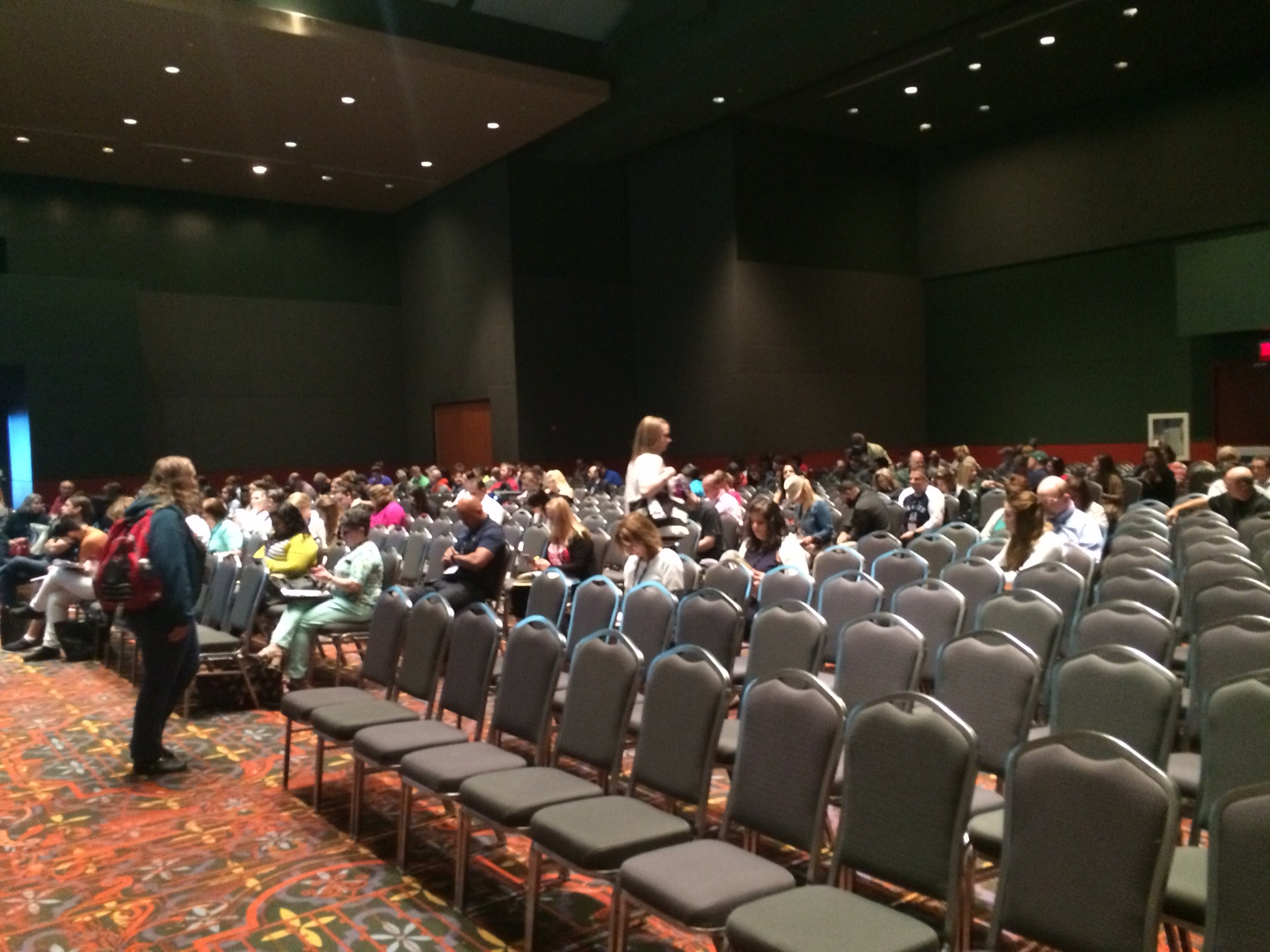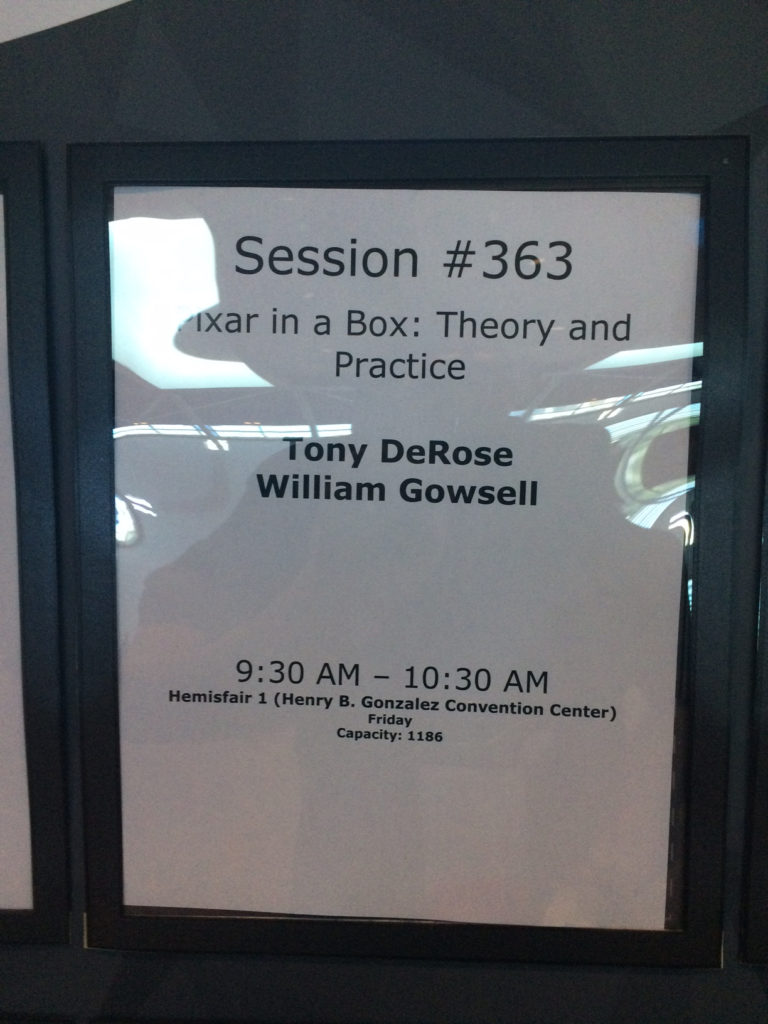Sharing My Experiences with Pixar in a Box
I had never been to Texas, but I always wanted to go. The problem is that opportunities to travel to the Lone Star state are few and far between. However, chance and a love of all things Disney offered me three days in the Alamo city.
After writing about Pixar’s new education initiative with Khan Academy, Pixar in a Box, and sharing my experiences about using Pixar in a Box in my classroom through social media, I was invited to present at the National Council of Teachers of Mathematics (NCTM) annual conference in San Antonio from April 5th through the 8th. I was the second part of the presentation talking about and showing how Pixar in a Box is used in my math classroom. Tony DeRose from Pixar, who heads Pixar in a Box, would start the hour-long session off.
Teaching offers many opportunities that you wouldn’t experience anywhere else. The idea that I would co-present with someone of Tony DeRose’s stature about Pixar and how its new program was helping students achieve success in math was an amazing opportunity. In case you don't know, the Pixar in a Box activities are designed to show a snapshot of what Pixar does while making movies giving students a hint to the math behind the movies they enjoy. Students have the chance to complete simplified activities that are similar to what every day Pixar filmmakers do.
I had to follow the guy from Pixar! My presentation needed to be good.
The arrangements for the conference were made last October, and for the next four months, rather than using old data, I worked with students in grade 6 and grades 3 and 4 completing some of the multitudes of lessons on pixarinabox.org.
The grade 6 students enjoyed the Character Modelling and Animation lessons, while my grade 3 and 4 students enjoyed the Crowds and Sets and Staging lessons. It didn’t matter the age of the students, they were engaged and interested in these math activities.
For my presentation, I used students' voices by recording their thoughts while completing the tasks. My part of the presentation was finished by February. When I touched down in San Antonio, I felt really confident about how I would explain that the creativity Pixar used in creating the worlds of Woody and Buzz was having a positive effect on my student’s success.
The day before our presentation, I hit the convention floor to check out the vendors. Wall to wall math, and everywhere you turned, someone was trying to give you something. It was Math Comic Con. I walked through the many isles of vendors, picking up pens, stickers, a coffee mug, and a variety of flyers describing hundreds of new math programs that any teacher can use. To my surprise, I even found Cinderella Castle. Yes, Cinderella Castle, and two Cast Members from Walt Disney World.
Disney Youth Programs stood in front of me with a massive cardboard cutout of the castle, and the friendly Cast Members shared with me what Disney Youth Programs offers. Suffice it to say, the one of a kind learning opportunities that students would have with the Disney Youth Programs bring students into the Disney Parks to show them the learning environment and the laboratory of creativity that is the Disney Parks.
I had never heard of the Disney Youth Programs, but I’m not surprised that there is such a thing. After talking with the Cast Members and explaining how I was presenting about Pixar in a Box, the Cast Members promised me they would be in the audience. They didn’t know much about Pixar in a Box, and were eager to learn. I left with a rare Mickey shaped pencil labelled with Disney Youth Programs.
Tony DeRose and I met one hour before our session. We talked about our stay, and made small talk about the upcoming presentation. Before I knew it, we were taking the stage and setting up our tech on the podium. You can’t present to hundreds of teachers and have your presentation not work, especially the video portion. I was relying on those to make my point.
Tony started off by sharing the reason behind the creation of Pixar in a Box, and then took the audience through what was offered, showing several of the videos that introduce lessons on the site. Then it was my turn.
I started off telling the crowd about myself, and as interesting as a bio about me is, I got into the uses of Pixar in a Box quickly. No one came to hear about me, they wanted to know what I experienced. So I told them with glee how my students were inspired by and enjoyed showing their math skills using the many activities on Pixar in a Box.
Whether it was one student who duplicated the claw from Toy Story on the Character Modelling lesson, or students animating the Luxo Ball on the Animation lesson, students are constantly challenged to use math skills to be successful on the tasks. The joy in the student's voice as they explained their thinking based on what they did on Pixar in a Box was evident to everyone in the room. What you didn’t hear was stress or anxiety from the students. This was fun — math was fun because of Pixar in a Box.
I finished my presentation off with my grade 3 students explaining how they built 12 robots for under $300 based on an activity from the Crowds lesson. For 20 minutes, I shared examples from my students who were happy and engaged with math while using Pixar in a Box activities. That’s something I have noticed: no matter the grade I am in, students are not concerned with how difficult the math is. One student even mentioned that she thought the task on the Character Modelling would be hard, but she just wanted to try it. That is the positive mindset all teachers hope to hear in math.
My presentation at the NCTM conference in San Antonio allowed me to share my joy of using Pixar in a Box in my classroom. The creativity of Pixar is on display and ready to be used by students and adults. Check out pixarinabox.org, and you will learn something new — I promise.





